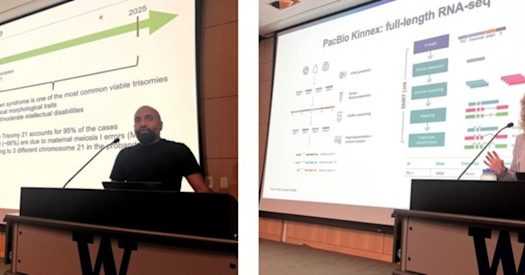 Scott Furlan: 'I want to learn more about the emerging software used to analyze long-read sequencing data.'
Scott Furlan: 'I want to learn more about the emerging software used to analyze long-read sequencing data.'
[NOTE: Dr. Furlan, M.D. is a physician at Seattle Children's, an assistant professor in the Clinical Research Division at Fred Hutchinson Cancer Center, and an assistant professor in the Department of Pediatrics at the UW School of Medicine. He is scheduled to present at the BBI-sponsored Long-Read Sequencing Symposium on October 28th at the Seattle Children’s Research Institute.]
What is the topic of your presentation and what do you want participants to grasp from it?
I plan to discuss HLAs – Human Leukocyte Antigens – which play a significant role in disease and immune defense – and represent an important mechanism of relapse in Leukemia. We have developed a new single cell, long-read platform that enables us to quantify and characterize HLA expression in Leukemia. My hope is that participants understand how single cell technology can be unified with long-read sequencing. This is a particularly clinically relevant use of long-read sequencing at the single cell level that could have major benefits for patients who have had transplants as part of their Leukemia treatment.
What do you hope to learn from the symposium?
I want to learn more about the emerging software used to analyze long-read sequencing data. It would be great to see what successes other researchers have had and what they have learned from an analysis point of view. The technology behind long-read sequencing is solid; I’m interested in how people are handling and using the data, as well as to learn how others are using the platforms and, potentially, finding applications to the platforms similar to what we are doing.
Dr. Danny Miller, who leads BBI’s long-read sequencing program, has said: “I believe (long-read sequencing) is well-poised to increase the diagnostic rate, decrease the time it takes to make a genetic diagnosis, and reduce barriers to accessing comprehensive clinical testing.” What do you believe the scientific community needs to do to accomplish such goals?
I wholeheartedly agree with Danny. But we need more evidence on the “what” we need to do as a scientific community, as well as to do more of the “how” – that is to identify software that can analyze long-read sequencing data and produce results, similar to the deep and broad analyses we have with software for short read data. That technology for short read has been available much longer. As a result, we have a greater depth of software usage. If we were to have a similar “explosion” of long-read analysis software, the scientific community would be benefit greatly.
We need more tools, that is, software. We need to chip away at this in certain clinical scenarios. One scenario we are especially interested in is Leukemia, where genetic tests are very important. However, those tests are spread across many different types of clinically orderable tests, but they could be done using one long-read approach.


